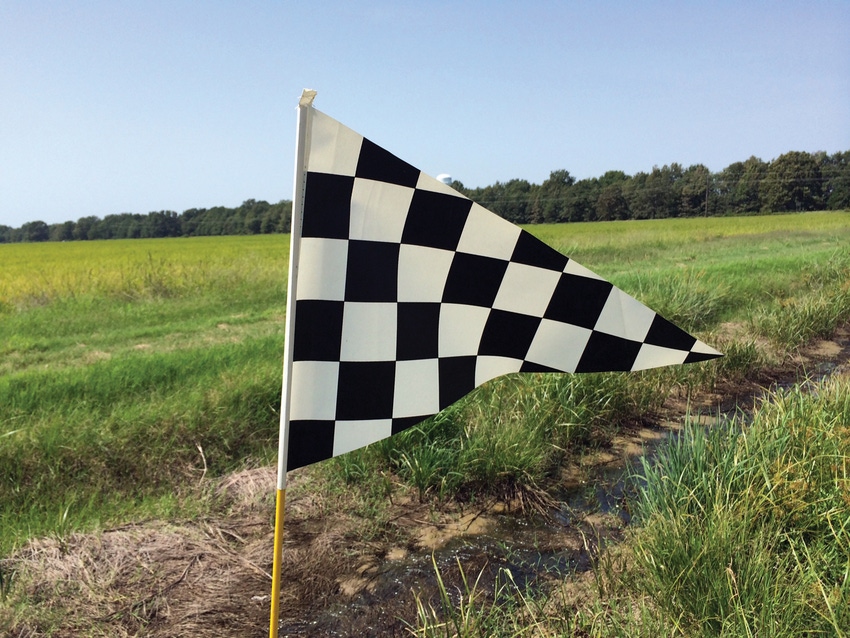August 8, 2018

Dicamba drift across the landscape was the dominant call again this June and July.
Once again, Palmer amaranth control with dicamba was very good in many fields. This is the third year where there have been major issues keeping dicamba in the field, but Palmer amaranth control was good in fields where it was applied. It really dawned on me that this is not so much new, but after three consecutive years is, in fact, the “new normal.”
For three decades, I have had the privilege to make thousands of field visits to help growers troubleshoot problems. Every year, a number of those problems were drift-related. The herbicide drift in those calls would typically travel no farther than a couple hundred yards. In only a few cases can I recall it going much farther.
However, the drift we are saw this June and July in Tennessee with dicamba in the new use pattern in Xtend crops is like nothing I have ever seen before. I have never seen a herbicide that has so easily and frequently slipped the leash. Nor have I seen a herbicide that, once off the leash, would roam so far. Dicamba drift for the past three years has often travelled a half mile to three-quarters of a mile and, all too frequently, well beyond that.
We are not alone. I keep in contact with my university Extension weed scientist colleagues and, again this year, pretty much any state that borders or contains the Mississippi, Missouri and/or Wabash River valleys is having extensive off-target drift issues with dicamba applied in Xtend crops.
I truly would like to have seen a much better outcome from a stewardship standpoint this summer with dicamba as the weed control has been good. Instead, it has been more of the same with landscape level movement of that herbicide. The one significant difference this year has been there were fewer Tennessee soybean fields injured by dicamba.
I feel the main reason for this is there are very few soybeans planted in Tennessee that are not Xtend and, therefore, in harm’s way. Many growers have told me they simply gave up trying to grow non-Xtend soybeans because they had repeatedly seen dicamba injury in past years — often multiple times in the same year. In essence, they “grew them in defense” of being drifted on.
My best estimate is that Tennessee has roughly 100,000 acres of non-dicamba tolerant soybeans planted and about 40 percent of them are currently showing dicamba injury. Moreover, there has been an increase in other broadleaf plants besides soybeans showing dicamba injury.
After walking fields and visiting with many applicators and folks whose fields or landscape have been drifted on, one can find many causes for the off-target dicamba. However, when time and time again I walk into a soybean field that is showing uniform injury from one side to the other, dicamba volatility into an inversion seems a very plausible explanation. Indeed, a number of my weed science colleagues have conducted research that would suggest this very thing.
See also: Monsanto responds to increased dicamba drift reports
Monsanto keeps all my weed science colleagues and me updated on their investigations of all the complaints of off-target dicamba movement. They repeatedly inform us that it is all off-label issues and, therefore, the fault of our applicators.
I have seen some applicator error, as well. However, from all my conversations with applicators this spring and summer I feel that most took the dicamba stewardship training to heart and, as a whole, they have really done as good a job as possible. Tennessee Department of Agriculture spot checks conducted this summer would also indicate applicators are following the label.
Also, I take into account our applicators’ pesticide stewardship record in recent decades and they have, with few exceptions, kept most any herbicides applied in the target field. Therefore, the results from Monsanto’s investigations strike me odd that suddenly, and only with dicamba in June and July applications, our applicators are incompetent. In my mind that does not wash.
There will be a new sheriff in town by the name of Bayer who will own this technology. I, for one, would like them to cast a fresh perspective on this issue and look to change course. In my mind, Monsanto’s course is leading us toward losing our credibility with the non-farm public that we know how to steward pesticides. My hope is that Bayer will change course before that credibility is damaged beyond the point of no return.
About the Author(s)
You May Also Like




